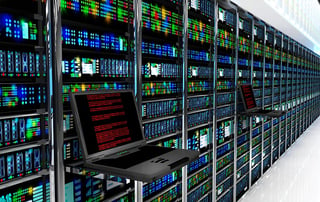 “What do Big Foot, Nessie [The Loch Ness Monster] and hyperconvergence have in common?” asks the voiceover on this Lenovo sponsored video. Answer: “They are all the subject of some legendary myths.”
“What do Big Foot, Nessie [The Loch Ness Monster] and hyperconvergence have in common?” asks the voiceover on this Lenovo sponsored video. Answer: “They are all the subject of some legendary myths.”
Well, not quite - hyperconvergence is real. The other two are, most likely, not. However you’d be surprised at just how many myths, or rather misunderstandings, there are around hyperconvergence. It’s not a juxtaposition you’d expect to be common, but put “hyperconvergence myths” into Google and you’ll get over 170,000 hits!
Myth number two in the video is that “VDI [virtual desktop infrastructure] is the killer app for hyperconverged infrastructure.” It goes on to say that it is certainly the most common application but “the killer app is still out there.”
Gartner agrees. It has a list of seven myths2 around hyperconvergence, one of which is “The most important use case is VDI.” Gartner dispels this one saying: “Many general-purpose workloads are now a match for [hyperconverged infrastructure] due to improved performance, scaling, data protection and ease of deployment, as well as an expanding hybrid cloud ecosystem.”
Understanding the attributes of hyperconvergence that made VDI an early use case will help determine what those other workloads might be, and why.
One of the attributes of hyperconvergence that make it popular for VDI is its seamless blending of solid state and spinning disc storage. VDI suffers from boot storms when many users attempt to boot their virtual desktops at the same time. The use of solid-state storage can mitigate these.
Another key feature of hyperconverged infrastructure is simplified, single console management of the combined technology. This makes it ideal for remote office deployment where there is no onsite IT management.
Specific applications aside, hyperconvergence is now making significant inroads into all areas of IT, because it is flexible, versatile and cost effective, and these general attributes are being recognised in addition to the specific attributes to which hyperconverged infrastructure is well-suited.
A survey of 426 IT professionals undertaken by DataCore in late 2016 and early 2017 found a wide spread of applications on hyperconverged infrastructure: databases, data centre consolidation, enterprise applications, VDI, remote sites, big data/web scale applications, analytics.
And in 2016 ActualTech Media surveyed nearly 1,100 technology professionals and members of organisational management to gauge understanding and adoption of hyperconvergence. It found a distinct shift from application specific reasons for hyperconverged infrastructure deployment.
ActualTech Media reported: “In 2016, drivers like operational efficiency (14 percent increase [over 2015]), cost reduction (11 percent increase), improving scalability (40 percent increase), and reduction in interoperability issues (100 percent increase) had big increases.”
In other words, hyperconvergence is becoming something of a disruptive force in enterprise IT. No surprise then that there is another myth, courtesy of Gartner: “Traditional vendor selection preference will remain the same.”
Gartner said focus group participants had shown that loyalty to traditional vendors would be tested by several criteria around hyperconverged infrastructure.
“Is the vendor increasingly fluent in the new wave of [hyperconverged infrastructure]? Is it seriously willing to disrupt its conventional solutions? Does it have the vision to drive innovation? Can it keep ahead of emerging, agile competitors and increase its savings?”
All very good questions.
Download: Lenovo Storage DX8200D powered by DataCore datasheet
Read our first hyperconvergence blog: Hyperconvergence, the latest IT disruptor?

 “What do Big Foot, Nessie [The Loch Ness Monster] and hyperconvergence have in common?” asks the voiceover on this
“What do Big Foot, Nessie [The Loch Ness Monster] and hyperconvergence have in common?” asks the voiceover on this